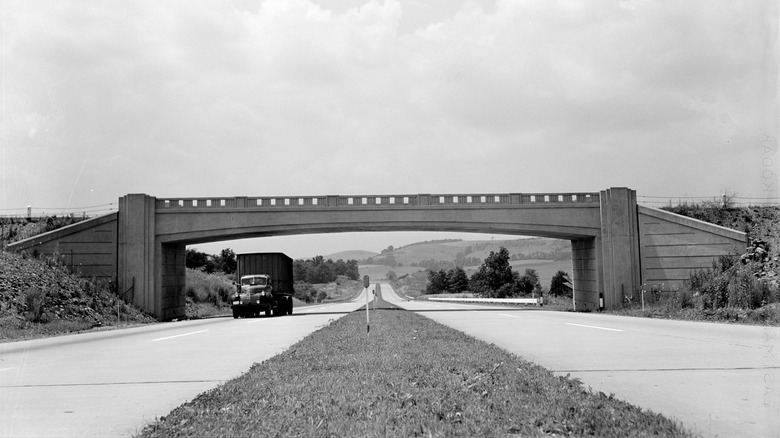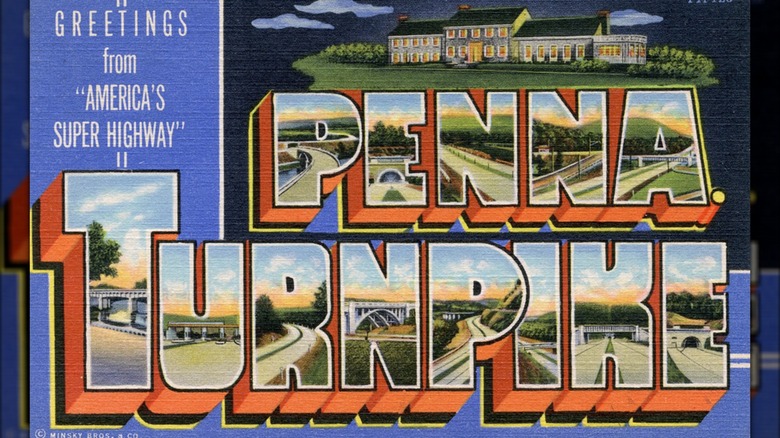America's First Superhighway Started As An 1800s Railroad
At the turn of the 20th century, automobiles were forced to share the "roads" with what was still the primary mode of transportation for most people. In 1902, 23,000 cars were operating within the United States, yet there were still 17 million horses being ridden and used to pull wagons and carriages. These early "roads" were actually the same packed-earth and stone paths used by beasts of burden for centuries, filled with deep ruts and mounds of excrement, all of which turned into a muddy quagmire when it rained.
When the stock market crashed on Black Thursday in October 1929, it ushered in the Great Depression. By mid-November, an estimated $30 billion in stock values simply vanished into thin air. By March 1930, over 3.2 million people were unemployed, at a time when the total population was only 122,775,046 (roughly one-third of what it is today). Franklin D. Roosevelt was elected President in 1932, and between 1933 and 1935, the country began to recover thanks to his New Deal policies. These wide-ranging economic, social, and political programs included the Works Progress Administration (WPA) and the Civilian Conservation Corps (CCC), which provided both federal aid and temporary jobs.
The state of Pennsylvania began a feasibility study in 1934 for what would become the Pennsylvania Turnpike, otherwise known as "America's First Superhighway." Interestingly enough, the plan incorporated using part of an unfinished railway route begun by the South Pennsylvania Railroad in the 1880s. It was never completed, but about 4.5 miles of tunnel work had been started — but not "holed through" — across seven mountains.
The Pennsylvania Turnpike was straight, safe, and fast
The Pennsylvania Turnpike was funded through a loan from the New Deal's Reconstruction Finance Corporation for nearly $41 million, and another $29 million in grants provided by the WPA. The original 160-mile stretch of four-lane concrete roadway was the country's first large-scale construction project to use consistent design standards. It included 12-foot lanes (two in each direction) and now-requisite concepts like medians, berms, entrance and exit ramps.
However, it also incorporated features you may not even know existed, such as a minimum sight distance of 600 feet, banked curves, and a 3% maximum grade, which provided a safer driving experience for truckers. Additionally, it intentionally ran along southern exposures, allowing the sun to heat up and melt snow and ice. Since nearly 70% of the road was straight with nary a cross street, traffic signal, or railroad crossing – speeds of 100 mph could easily be reached (think American Autobahn).
The construction of the 300+ bridges and culverts, nine interchanges, 10 service plazas, and 11 toll booths took only 23 months. It required a total of 770,000 tons of sand, 1.2 million tons of stone, 50,000 tons of steel, and more than 300,000 tons of cement to build. The employment of some 155 construction companies and 15,000 workers from across 18 states provided an incredible boon to an economy trying to emerge from the Great Depression. "America's First Superhighway" (which are different from freeways) allowed drivers to travel safely and quickly over long distances for the very first time. It officially opened on October 1, 1940, and just recently celebrated its 85th birthday.

